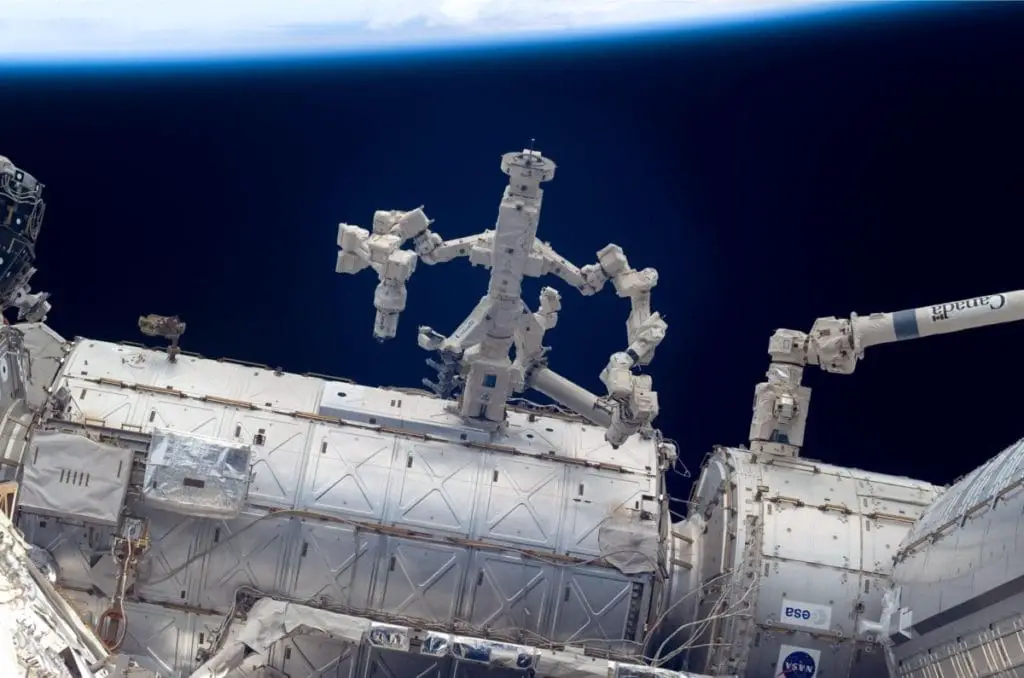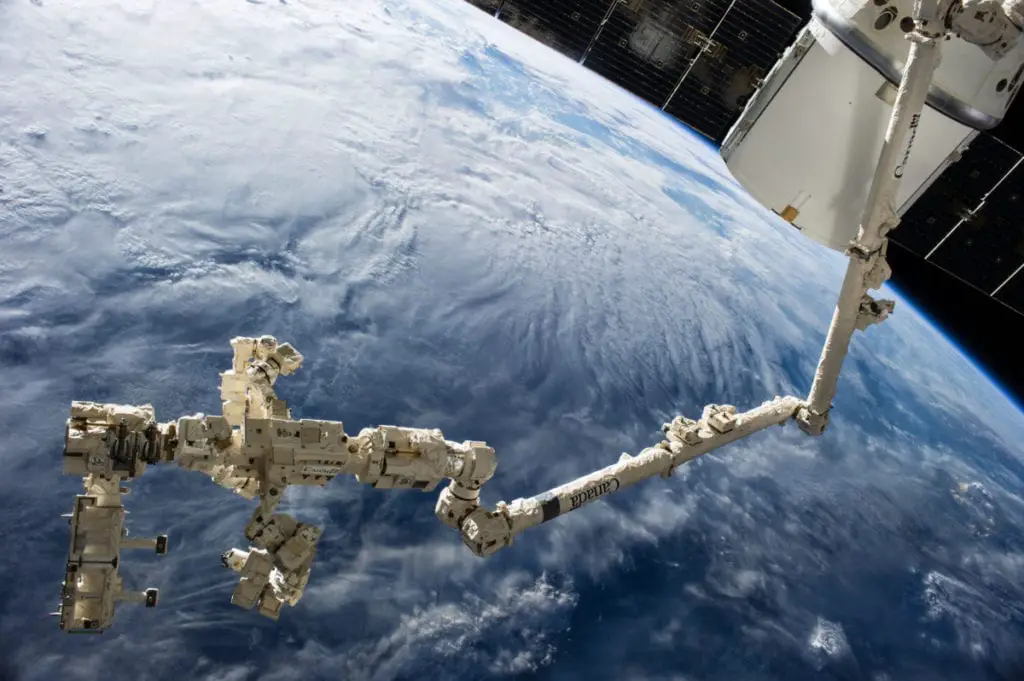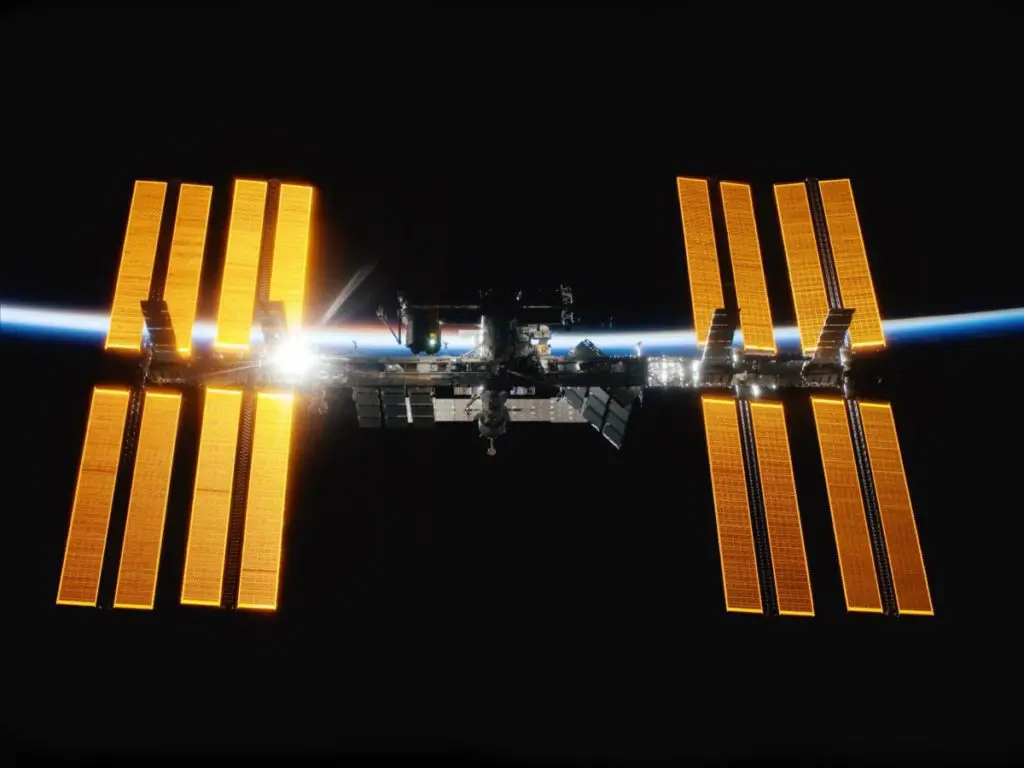
While looking nothing like the death star, the International Space Station is undoubtedly humanity’s joy and pride that brought us one step closer to understanding the secrets of the universe.
Contrary to what we know about space stations from our favorite fictional novels or TV shows, the International Space Station did not have a blueprint outlining each nail and screw and where it should go. It was assembled piece by piece, module by module, over the course of 22 years that resulted in what we know as the ISS today.
Unless you have the time to be flipping through every single page of the ISS manual, read on to find out exactly what type of modules are a part of the station today and what they are contributing to the giant floating laboratory in space.
How many modules does the International Space Station have?
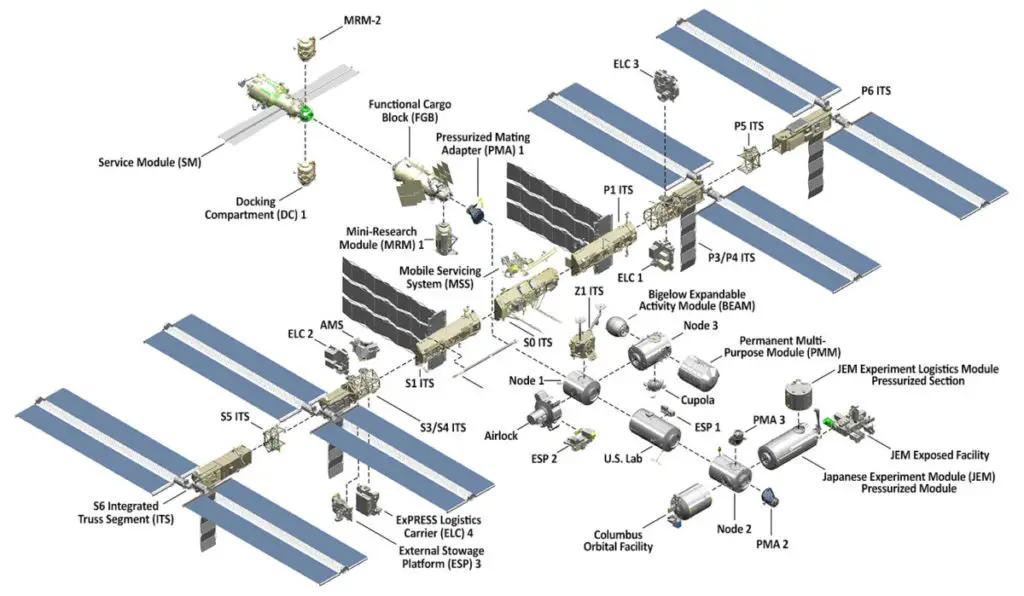
Image by NASA
The International Space Station have in total 39 modules which will be listed below.
All solar arrays aboard have been counted as a single unit as they have all been delivered and installed upon different segments of the Integrated Truss Structure (ITS).
Although some parts of the ISS have official names that include the word “module”, we will be using the term freely in this article to describe independent units that make up the International Space Station.
The following is a list of all modules of the ISS in the order of their installation date:
- Zarya
- Unity Module
- Zvezda Service Module
- Z1 (Zenith) Module
- P6 (Port) Truss/Solar Arrays
- U.S. Destiny Laboratory Module
- External Stowage Platform – 1
- Space Station Robotic Manipulator System (Canadarm 2)
- Joint Airlock Quest
- Pirs Docking Compartment
- S0 (Starboard) Truss
- Mobile Base System
- S1 (Starboard) Truss
- P1 (port) Truss
- External Stowage Platform-2
- P3/P4 (Port) Truss & Solar Arrays
- P5 (Port) Truss Spacer
- S3/S4 (Starboard) Truss & Solar Arrays
- S5 (Starboard) Truss Spacer
- External Stowage Platform-3 (ESP-3)
- Harmony Module
- Columbus Laboratory Module
- Japanese Logistic Module
- Dextre
- Japanese Experiment Module Kibo (Hope)
- S6 (Starboard) Truss Spacer and Solar Arrays
- Japanese Exposed Facility
- Poisk Mini-Research Module-2
- EXPRESS Logistics Carrier-1 (ELC-1)
- EXPRESS Logistics Carrier-2 (ELC-2)
- Tranquility Module
- Cupola
- Rassvet Mini-Research Module-1
- Permanent Multipurpose Module
- Express Logistics Carrier-4 (ELC-4)
- Alpha Magnetic Spectrometer-2 (AMS-2)
- EXPRESS Logistics Carrier (ELC-3)
- Bigelow Expandable Activity Module (BEAM)
- NanoRacks Bishop Airlock
What does each of the ISS modules do?
To start with some definitions:
- Truss – Beams that serve as the space station’s backbone to which many parts are connected.
- Airlock – Airtight rooms with two entrances that allow an astronaut to leave the station for a spacewalk without letting air escape the spacecraft.
- Nodes – Modules that connect parts of the space station together.
- PMA – Pressurized Mating Adapter converts the Common Berthing Mechanisms (CBM) of US orbital segments to the APA-95 docking ports.
- IDA – International Docking Adapter that converts the APAS-95 to the NASA Docking System (NDS).
And the 6 Common Berthing Mechanism (CBM) Ports:
- Nadir – Direction facing the Earth
- Zenith – Direction facing Space
- Forward – Direction of orbital travel
- Aft – Direction opposite of orbital travel
- Starboard – Direction above the orbital plane when facing forward with feet to nadir
- Port – Direction below the orbital plane when facing forward with feet to nadir
With that out the way, let’s get started!
Zarya
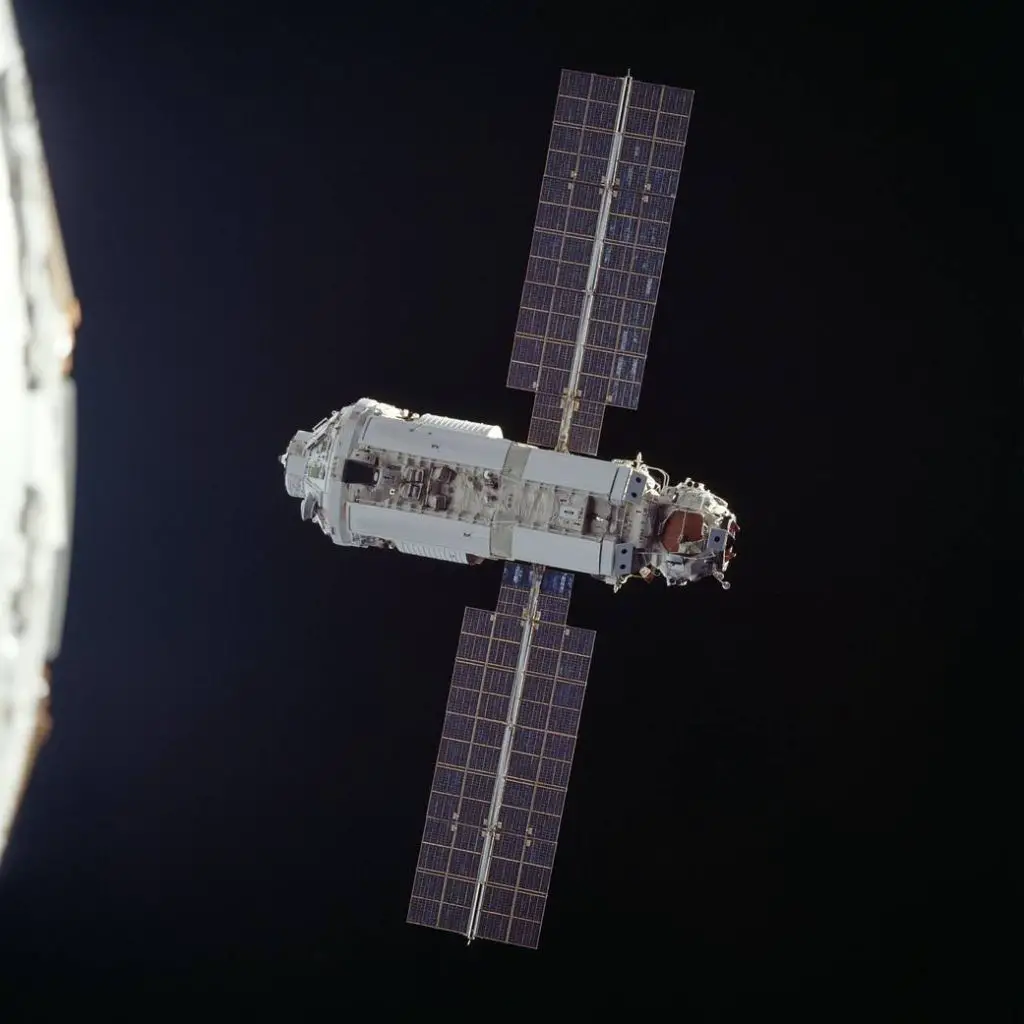
The Zarya (Sunrise) module was the first launched element of the ISS that Russia built under a U.S. contract.
This module’s technical name is the Functional Cargo Block (FCB), which during the early stages of ISS assembly provided power, communications, and altitude control functions to the rest of the station.
Currently, Zarya is primarily used for storage and propulsion.
Unity Module
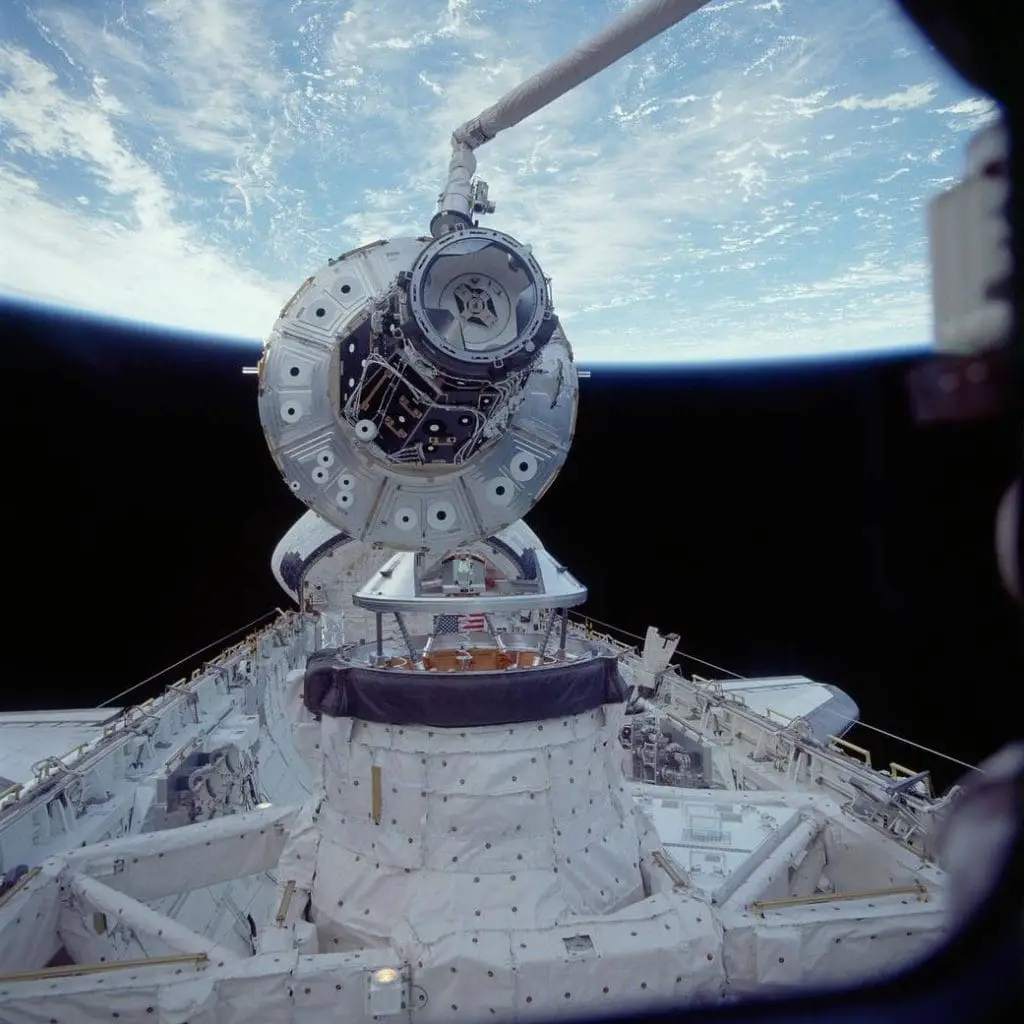
The Unity Module, a befitting name for the first of three nodes to be a part of the International Space Station.
Also known as Node 1, Unity was the first piece of the ISS provided by NASA, who contracted the piece to Boeing, and the second module to be assembled after the crew of the mission STS-88 mated it with the Zarya FCB in orbit.
Unity is cylindrical in shape with 2 axial and 4 radial Common Berthing Mechanism (CBM) ports – forward, aft, port, starboard, zenith, and nadir to facilitate connections to other modules.
It currently provides connections to:
- Forward – Destiny Module (Primary U.S. Research Laboratory)
- Aft – Zarya
- Starboard – Quest Joint Airlock
- Port – Tranquility (Node 3)
- Zenith – Z1 Truss
Harmony Module
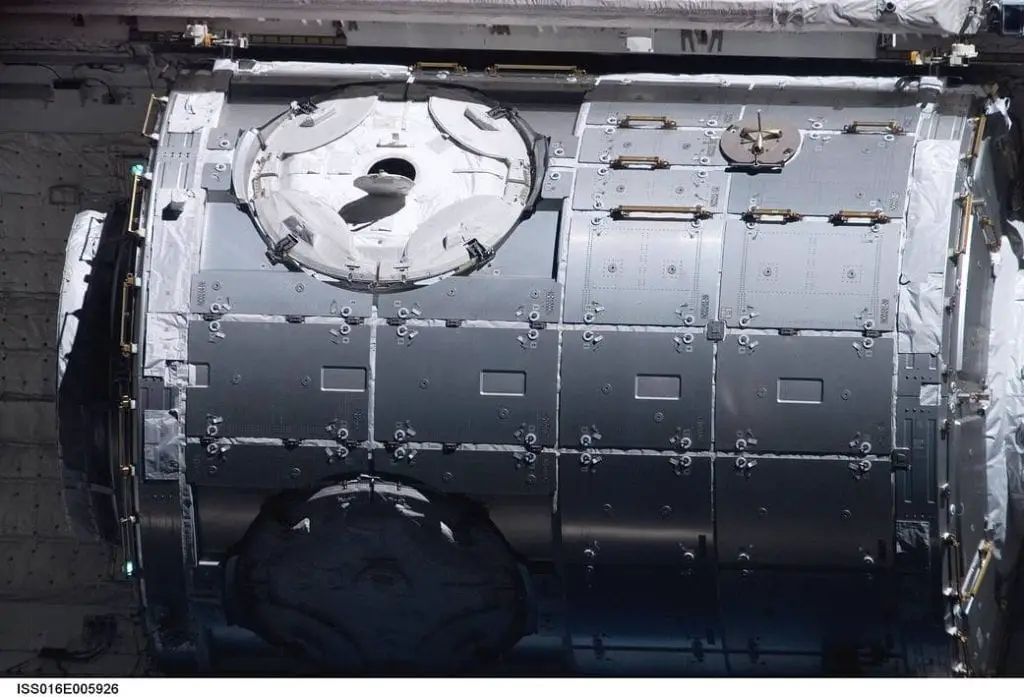
The Harmony Module, also known as Node 2 was the second node to become a part of the ISS.
Built-in Europe by Thales Alenia Space Italy (TAS-I) under a contract by the ESA, Node 2 hosts six berthing ports with 2 on the longitudinal axes (axial) and 4 on the radial perpendicular axes.
- Forward – International Docking Adapter (IDA)
- Aft – Passive port that connects to the Destiny Module (U.S. Laboratory)
- Starboard – Columbus (ESA Laboratory)
- Port – Pressurized Module Kibo (Japanese Laboratory)
- Zenith – PMA-3 linked to IDA-3
Although considered a node, Harmony is also the “utility hub” that distributes resources from the truss structure and provides:
- Living quarters for 4 crew members
- Air
- Water
- Electrical power
- Data and video exchange with the ground and the rest of the ISS
Tranquility Module
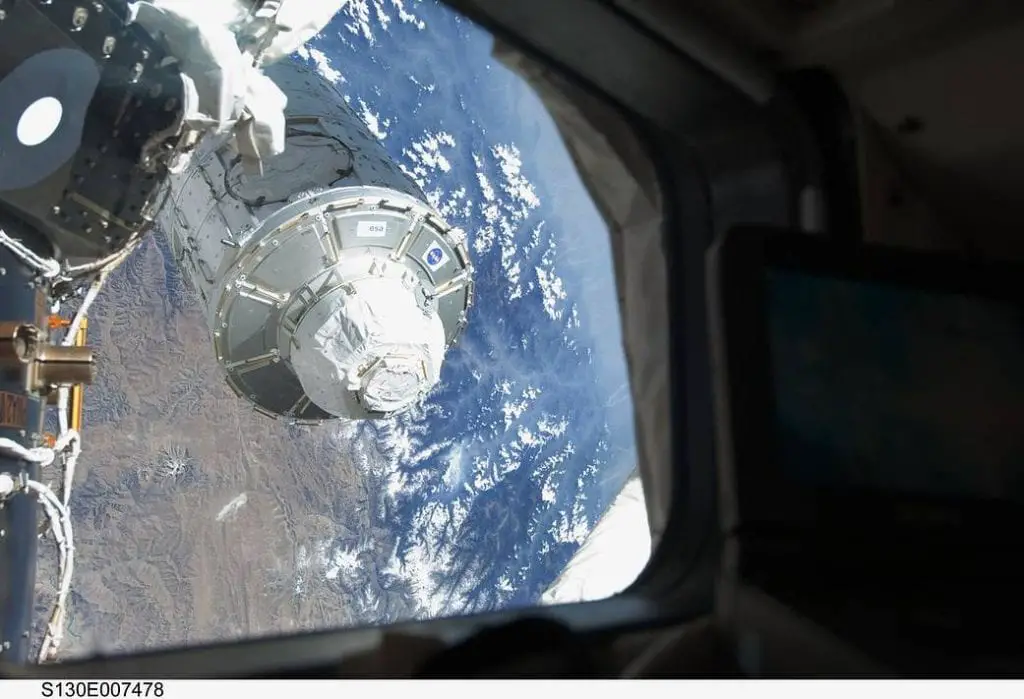
Like Harmony, the Tranquility module (Node 3) was funded by the ESA and built by Thales Alenia Space Italy (TAS-I) in Turin.
Aside from its six berthing ports, Tranquility also accommodates:
- Air revitalization
- Oxygen generation
- Carbon dioxide removal
- Water recovery system
It also contains a bathroom and exercising equipment, including a treadmill and a weight-lifting device.
Node 3 connects to:
- Forward – Permanent Multipurpose Module (PMM)
- Starboard – Unity Module (Node 1)
- Nadir – Cupola
Cupola
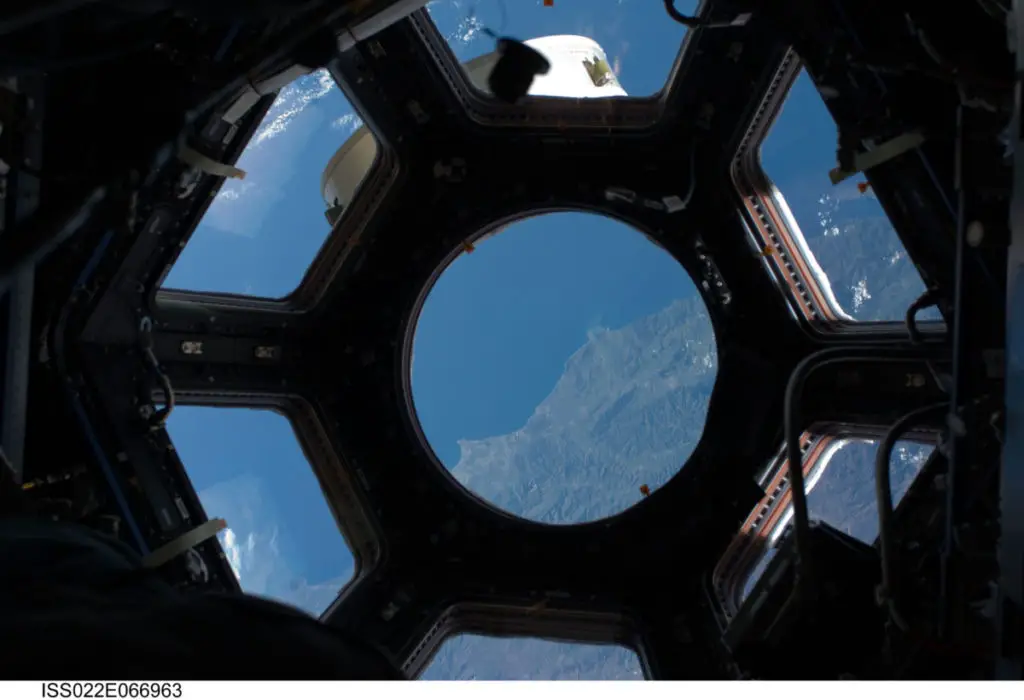
The Cupola is a module designed for the observation of operations outside the ISS. These activities include:
- Robotic Activities
- Approach of Vehicles
- Extravehicular Activity (EVA) (e.g., Spacewalks)
With six side windows and a direct nadir viewing window, the Cupola also provides views of Earth and other celestial objects. The windows are all equipped with shutters to protect ISS inhabitants from contamination and collisions with orbital debris or micrometeorites.
Within the Cupola, one can find a robotic workstation that controls the ISS’s remote manipulator arms and is berthed to the Earth-facing side (Nadir) of the Tranquility module (Node 3).
Zvezda Service Module
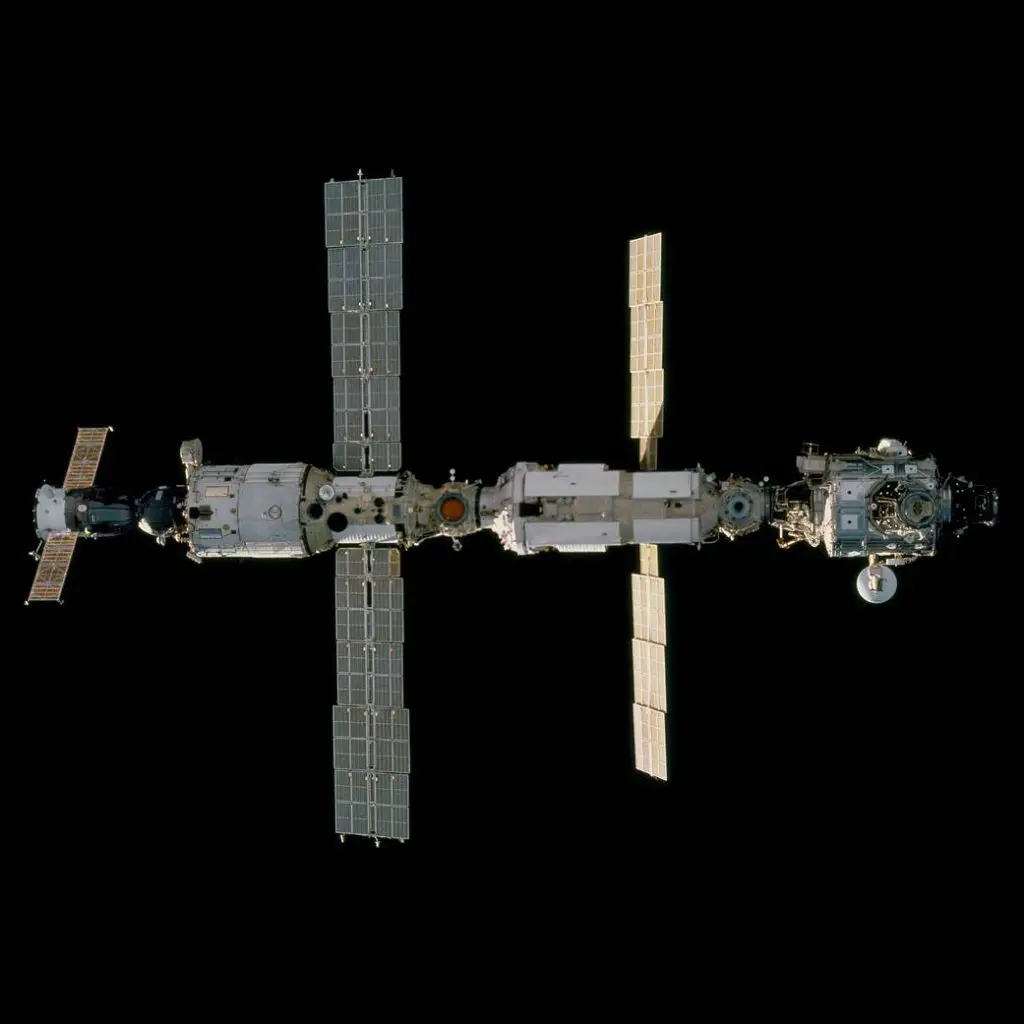
The Zvezda Service Module was the first module fully contributed by Russia.
It provided:
- Early living quarters
- Life-support systems
- Electrical Power distribution
- Data processing systems
- Flight control systems
- Propulsion systems
Although some of these systems were later supplemented by U.S. systems, Zvezda still remains the primary structural and functional centre of the Russian segment of the ISS.
Despite its primary purpose to support crew habitation, the Zvezda became the first multipurpose research lab on the ISS.
Integrated Truss Structure (ITS)
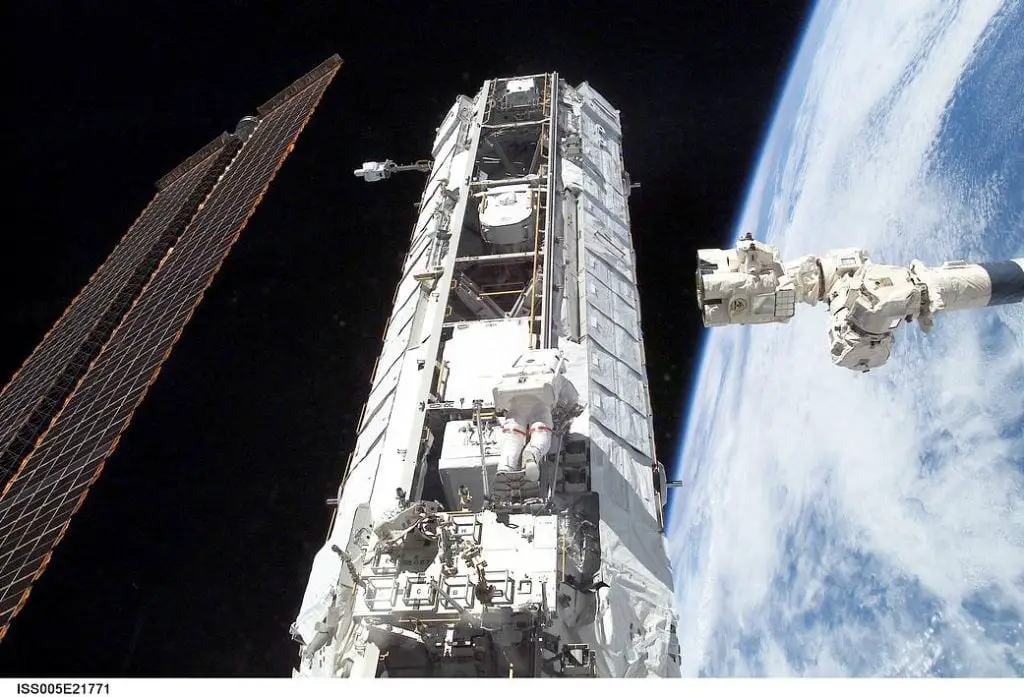
The integrated truss assembly provides attachment points for unpressurized components like solar arrays, thermal control radiators, and external payloads. The ITS also contains electrical, and cooling utility lines and Mobile Transporter rails for the Mobile Base System (MBS).
Made up of 11 segments and a separate component called Z1, this structure reaches 108.5 meters (356 feet) in length, including the extended solar arrays.
For simplicities sake, the following is a list of truss structures that complete the integrated truss structure (S/P stands for Starboard and Port, respectively):
- Z1 Truss
- P1 Truss
- P3/P4 Truss-Solar Arrays
- P5 Truss Spacer
- P6 Truss-Solar Arrays
- S0 and S1 Truss
- S3/S4 Truss-Solar Arrays
- S5 Truss Spacer
- S6 Truss-Solar Arrays
Mobile Base System
As a part of the Mobile Servicing System (MSS), the Mobile Base System (MBS) is a movable work platform that utilizes the Mobile Transporter rail car located on the integrated truss structure. The mobile transporter is operated by the ground team at the Canadian Space Agency and NASA.
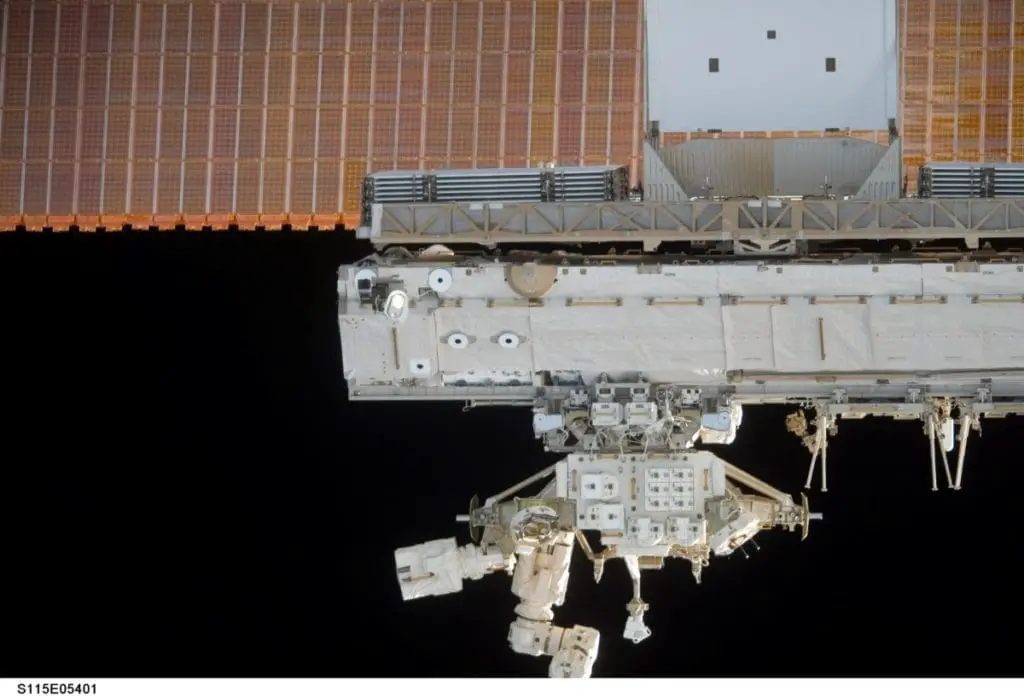
Image by NASA
These rails cover the length of the ISS and provide access to any of the eight worksites that contain power connections for the MBS and any of its tools/attachments.
The MBS has four power data grapple fixtures, including anchors that provide attachment points for cargo carriers, Canadaarm2, and Dextre. These fixtures allow the attached robots to receive power, data, and video connection from the ISS.
Space Station Robotic Manipulator System (Canadarm2)
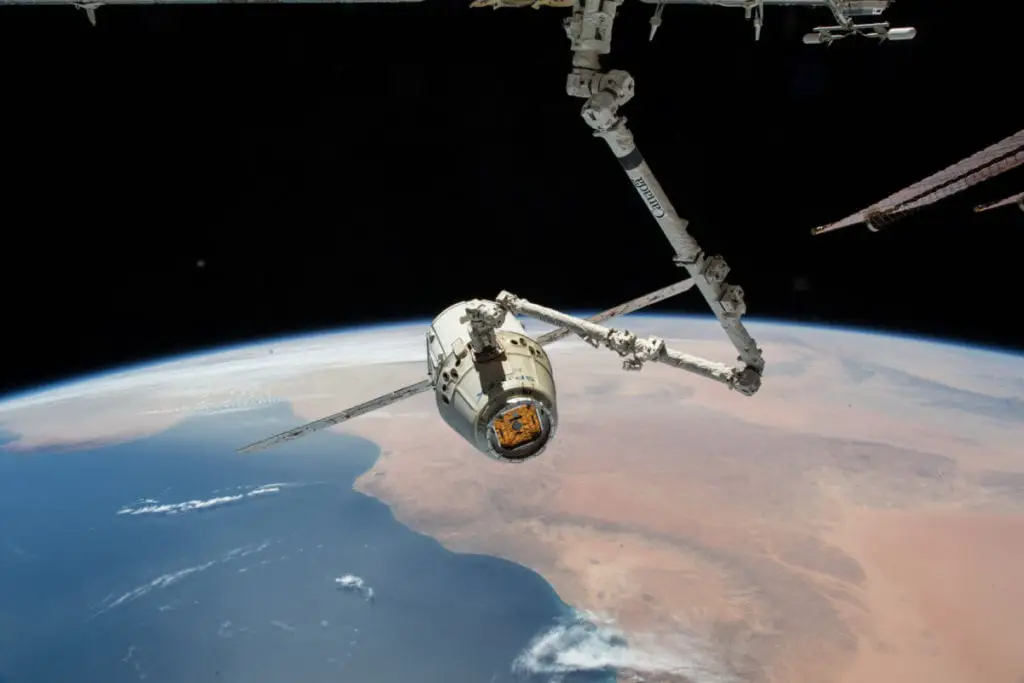
As another component of the Mobile Servicing System (MSS), the Canadarm2 is a 56-foot-long (17 meters) robotic arm that assembled the ISS module by module.
Aside from assembly, it is also regularly used to relocate Dextre, move supplies, astronauts and capture free-flying spacecrafts to berth them to the ISS.
Each end of the Canadarm2 features a Latching End Effector (LEE), and these “hands” contain cables that can tighten to ensure it has a strong grip on its targets.
The Canadarm2 is operable from 3 locations:
- NASA
- CSA
- ISS
Dextre
As a part of Canada’s contribution to the International Space Station, and the third component of the Mobile Servicing System (MBS), the Special Dexterous Manipulator (SPDM) or otherwise known as Dextre performs routine maintenance on the ISS with its dual-arm design.
This reduces the amount of time astronauts have to go on risky spacewalks and spend more time conducting scientific experiments.
Each of Dextre’s hand has:
- a retractable motorized wrench
- a camera and lights for close-up viewing
- a retractable connector to provide power, data, and video connection
This allows Dextre to grip delicate equipment without causing damage, including:
- Installing and replacing small equipment (ex. exterior cameras or 100-kg batteries)
- Replace defective components in the Station’s Electrical System
- Test new tools and robotic techniques that could one day allow us to service satellites in space
U.S. Destiny Laboratory Module
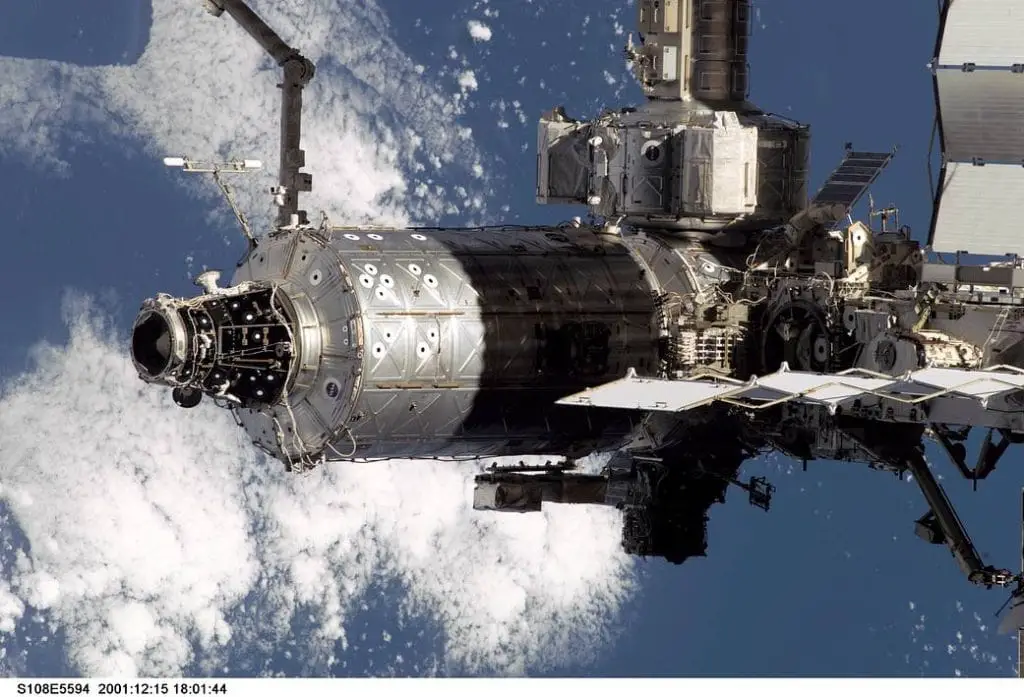
Destiny is the primary research laboratory for U.S. payloads that support experiments contributing to health, safety, and quality of life for people around the globe.
Destiny hosts internal interfaces to accommodate 24 equipment racks. 11 of these racks control ISS systems, while the other 13 are used for scientific research. Research payloads are typically housed in a standard rack, known as the International Standard Payload Rack (ISPR).
All racks stay in orbit while the experiments are changed as needed.
- EXPRESS Rack 1
- Contains sub-rack-sized experiments with standard utilities such as power, data, cooling, and gases
- EXPRESS Rack 2
- Contains sub-rack-sized experiments with standard utilities such as power, data, cooling, and gases
- EXPRESS Rack 6
- Contains sub-rack-sized experiments with standard utilities such as power, data, cooling, and gases
- EXPRESS Rack 7
- Contains sub-rack-sized experiments with standard utilities such as power, data, cooling, and gases
- Combustion Integrated Rack (CIR)
- Used to perform sustained, systematic combustion experiments in microgravity
- Fluids Integrated Rack (FIR)
- A complementary fluid physics research facility designed to accommodate a wide variety of microgravity experiments
- Materials Science Research Rack-1 (MSRR-1)
- Accommodates the study of many types of materials
- Microgravity Science Glovebox (MSG)
- Dedicated science facility that provides a sealed environment to perform different types of small “glovebox” sized experiments
- Window Observational Research Facility (WORF)
- Facility for Earth science research using the Destiny science window
- Minus Eighty-Degree Laboratory Freezer for ISS (MELFI-3)
- Refrigerator/freezer for biological and life science samples
All racks are protected from vibrations using the Active Rack Isolation System (ARIS), which is an electromechanical damping system attached to a standard rack that senses the environment with accelerometers. The ARIS then introduces a compensating force to dampen the vibrations.
ESA Columbus Laboratory Module
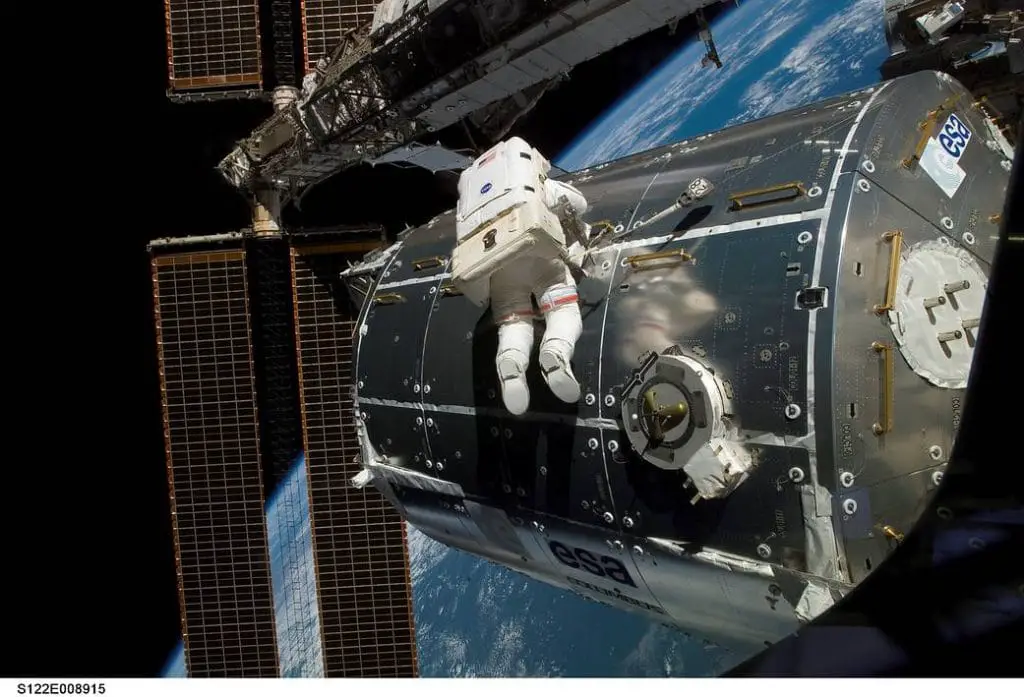
Image by NASA 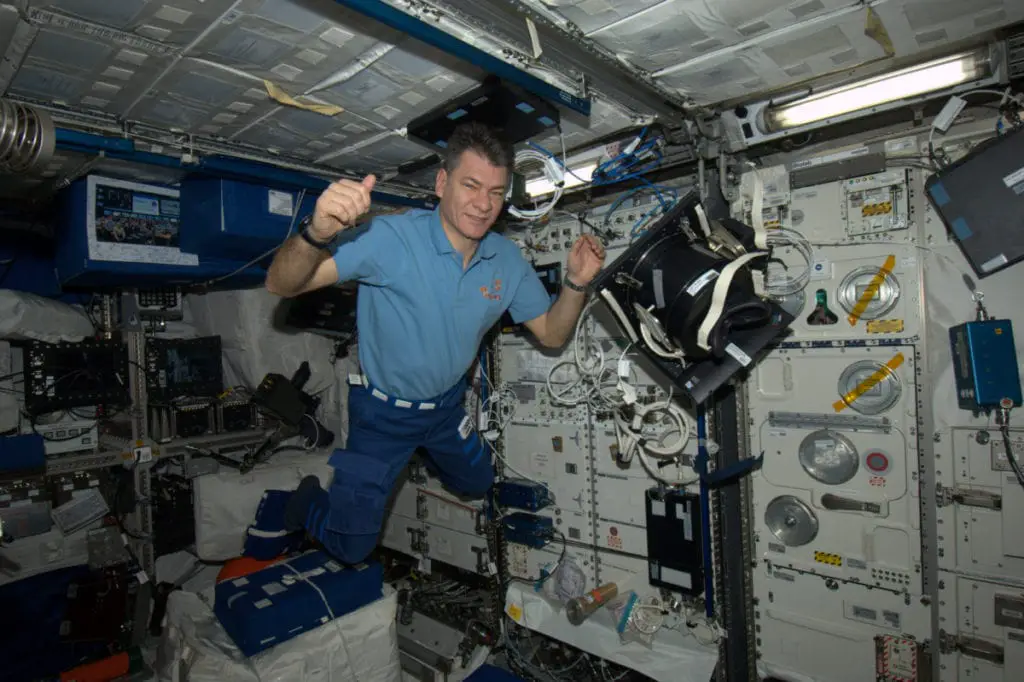
Image of the Biolab inside Columbus by ESA
The Columbus laboratory is Europe’s biggest contribution to the ISS that is permanently attached to Node 2 (Harmony).
This laboratory is unique in that not only is it flexible enough to provide room for researchers on the ground to conduct experiments with the aid of the station crew, it also provides four exterior mounting platforms that can accomodate external payloads for experiments to be conducted within the vacuum of space.
The Columbus can house 10 International Standard Payload Racks (ISPR), which include:
- EXPRESS Rack 3
- Contains sub-rack-sized experiments with standard utilities such as power, data, cooling, and gases
- Multipurpose Small Payload Rack 1 (MSPR-1)
- A multipurpose rack accomodating for small experiments from various science disciplines
- Muscle Atrophy Research and Exercise System (MARES)
- Equipment used for research on musculoskeletal, biomechanical, and neuromuscular human physiology
- Human Research Facility (HRF-1)
- Enables researchers to study and evaluate the physiological, behavioral, and chemical changes induced by long-duration space flight. Includes equipment for lung function tests and ultrasound for heart imaging, etc.
- Human Research Facility (HRF-2)
- Enables researchers to study and evaluate the physiological, behavioral, and chemical changes induced by long-duration space flight. Includes equipment for lung function tests and ultrasound for heart imaging, etc.
- Biological Experiment Laboratory (BioLab)
- Equipment to perform space biology experiments on microorganisms, cells, tissue culture, small plants, and small invertebrates
- European Drawer Rack (EDR)
- Provides sub-rack-sized experiments with standard utilities such as power, data, cooling, and gases
- European Physiology Module (EPM)
- Include equipment to investigate the effects of short- and long-duration space flight on the human body
- Fluid Science Laboratory (FSL)
- A multi-user facility for conducting fluid physics research in microgravity conditions
- KOBAIRO
- A science experiment rack accommodating a gradient heating furnace for material studies
Japanese Experiment Module Kibo (Hope)
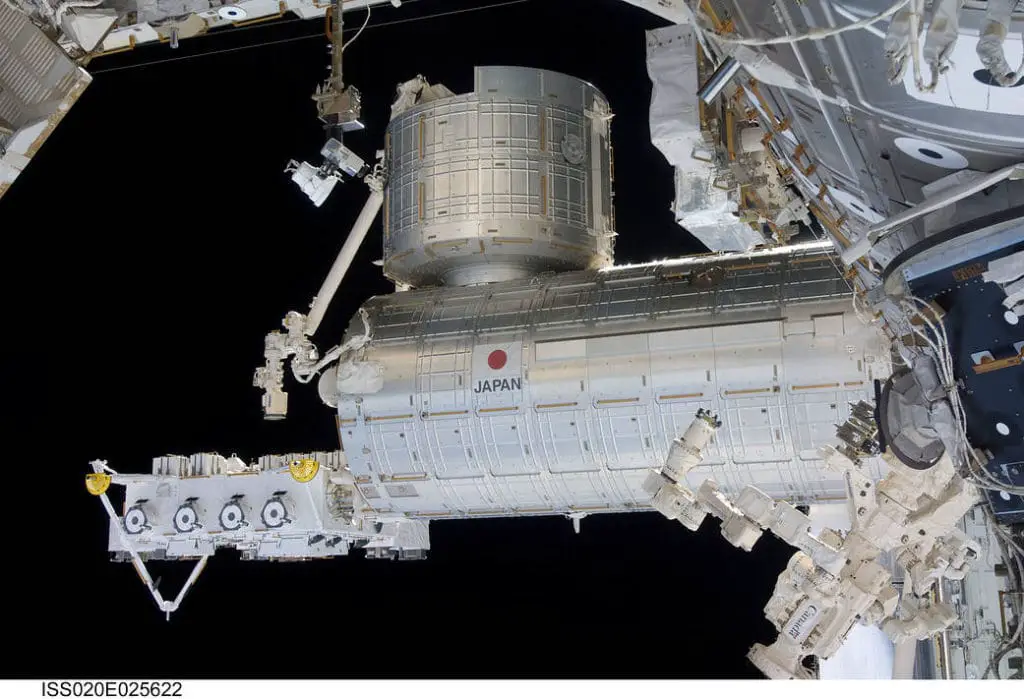
The Japanese Experiment Module (JEM), also known as “Kibo” meaning “hope”, is the Japan Aerospace Exploration Agency’s (JAXA’s) first contribution to the ISS program.
Like the Destiny and Columbus laboratories, Kibo aims to provide extensive opportunities for utilizing the space environment to perform experiments. Resources like air, power, data, and cooling fluid necessary for Kibo to function in orbit are routed from the U.S. segment of the ISS.
The Kibo Laboratory consists of three modules and was assembled over three space shuttle missions:
- Logistics Module
- The Experiment Logistics Module-Pressurized Section (ELM-PS) is a storage facility that provides space for experiments, samples, and spare items. The crew can move freely between the ELM-PS and the pressurized module.
- Pressurized Module
- The Pressurized Module (PM) is the Kibo Laboratory’s main facility, and all system racks necessary for on-orbit operation are installed in the PM.
- Interior pressure maintained at 1atm, which allows for a shirt-sleeve working environment.
- Store up to 23 racks, with 10 being the International Standard Payload Racks (ISPR).
- Exposed Facility
- The Exposed Facility (EF) provides a multipurpose platform that enables experiments to be deployed and conducted in the vacuum of space.
- Payloads can be exchanged or retrieved by Kibo’s robotic arm – the JEM Remote Manipulator System (JEMRMS).
Racks in the Kibo Laboratory includes:
- Minus Eighty-Degree Laboratory Freezer for ISS (MELFI-1)
- Refrigerator/freezer for biological and life science samples
- Minus Eighty-Degree Laboratory Freezer for ISS (MELFI-2)
- Refrigerator/freezer for biological and life science samples
- Multipurpose Small Payload Rack 1 (MSPR-1)
- A multipurpose rack accomodating for small experiments from various science disciplines
- EXPRESS Rack 4
- Contains sub-rack-sized experiments with standard utilities such as power, data, cooling, and gases
- EXPRESS Rack 5
- Contains sub-rack-sized experiments with standard utilities such as power, data, cooling, and gases
- Ryutai Experiment Rack
- Multipurpose payload rack system that supports various fluid physics experiments
- Saibo Experiment Rack
- Multipurpose payload rack system that sustains life science experiment units inside and supplies the required resources to them
- KOBAIRO
- Science experiment rack accommodating a gradient heating furnace for material studies.
External Stowage Platforms (1, 2, and 3)
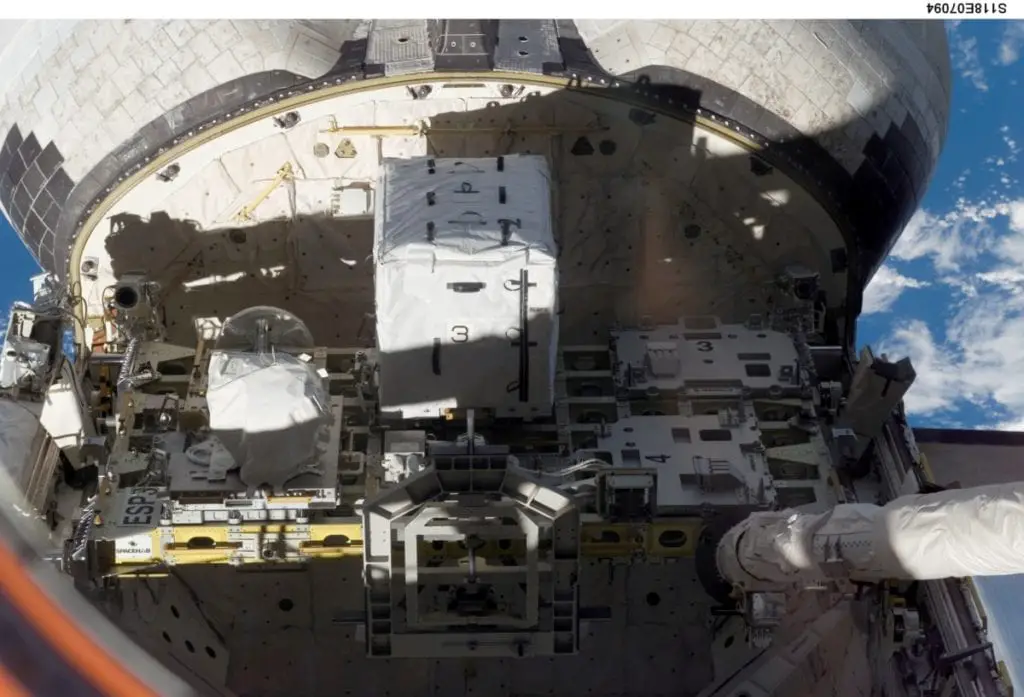
The External Stowage Platforms (ESP) are external modules that can hold spare parts, also known as orbital replacement units (ORUs), for the space station.
These platforms are not pressurized, but they require electricity to provide heat for some stored equipment. The ORUs are attached to the ESP through Flight Releasable Attachment Mechanisms (FRAMs), which are identified through matching witness plates that mate the ORU to the platform.
Joint Airlock Quest
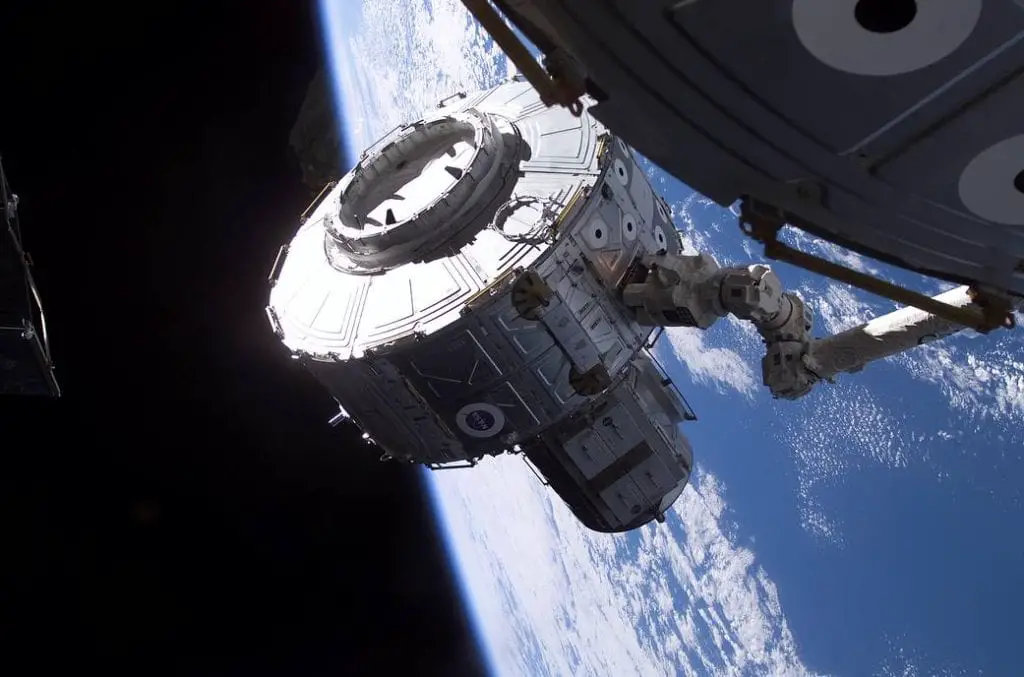
The Quest Airlock is a pressurized space station module consisting of two compartments attached end to end by a connecting bulkhead and hatch. The two compartments consist of:
- Equipment Lock
- The area for suit maintenance and refurbishment (Battery/Power Supply)
- Crew Lock
- The area which provides the exit for performing extravehicular activities (EVA)
The Quest airlock can support both U.S. spacesuits (EMUs) and Russian Orlan spacesuits for spacewalks.
Pirs Docking Compartment
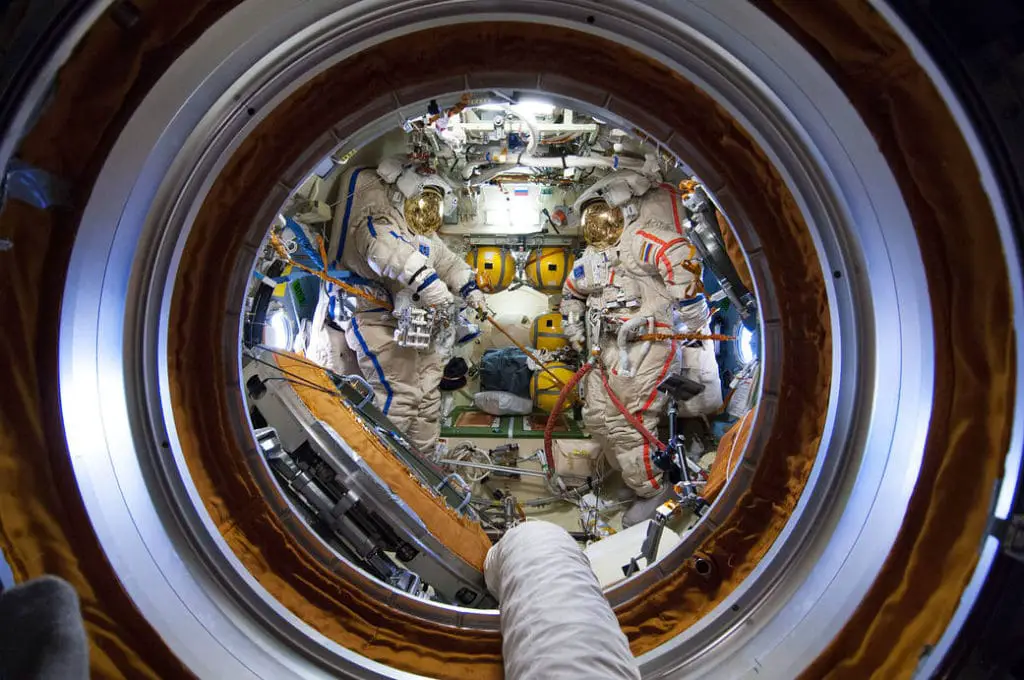
Image by NASA 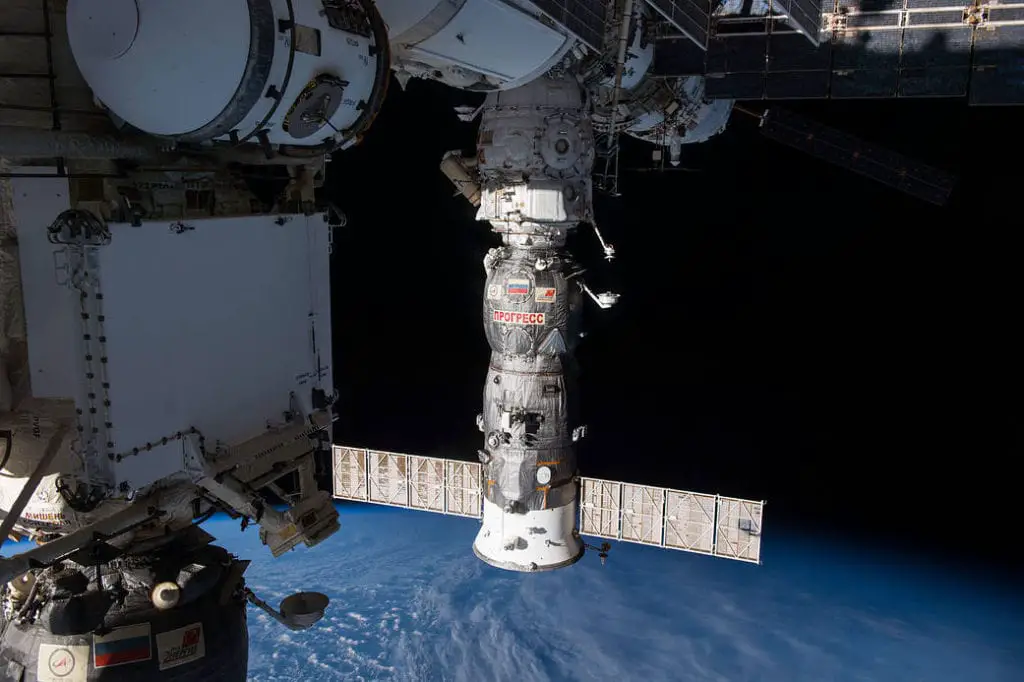
Image by NASA
Pirs serves two functionalities:
- Docking Port
- The docking system on Pirs provides a port specifically for the Russian Segment.
- Provided a port for the docking of Soyuz and Progress vehicles.
- Exit for Extravehicular Activities (EVA)
- Pirs has the capability for EVA using Russian Orlan spacesuits.
- Provides systems for servicing and refurbishing the spacesuits.
EXPRESS Logistics Carrier (1, 2, 3 and 4)
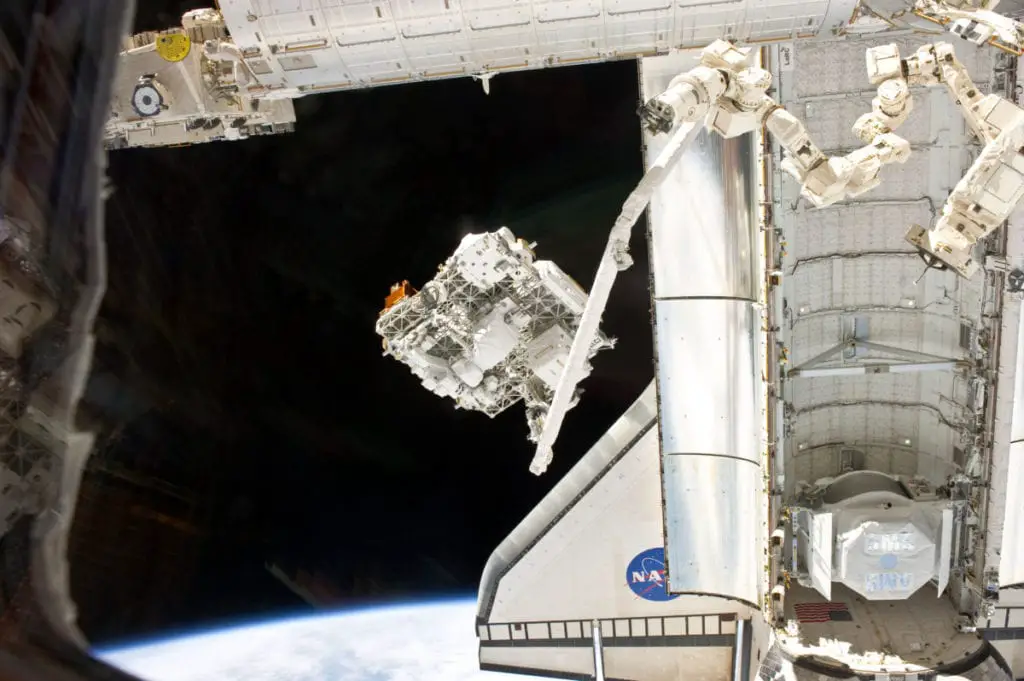
The EXpedite the PRocessing of Experiments to Space Station (EXPRESS) Logistics Carrier (ELC) was designed to support external payloads.
These payloads can mount to the ISS starboard and port trusses with either deep space or Earth view.
Mounting spaces are provided on these platforms, and interfaces for power and data are standardized to provide quick and straightforward payload integration with the use of Dextre.
Rassvet Mini-Research Module-1
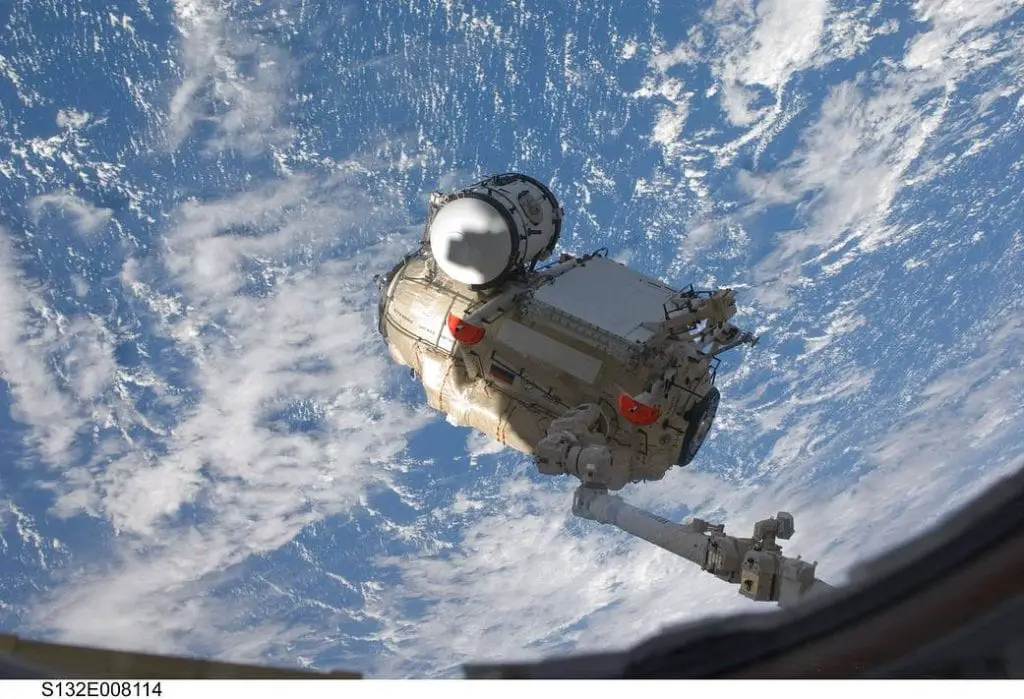
Also known as the MRM1, Rassvet is a Russian Module primarily used for cargo storage.
Rassvet (Dawn) is also equipped with eight internal workstations, which aid its purpose to serve as a mini-research laboratory for biological and biotechnological investigations and experiments in material sciences and fluid physics.
The Nadir docking system of Rassvet provides the fourth docking port on the Russian segment for the Soyuz rocket and Progress Logistics Vehicles.
The exterior of Rassvet also accomodates:
- the spare elbow joint for the European Robotic Arm (ERA)
- outfitting equipment for the Russian Multipurpose Laboratory Module (MLM)
- radiator and airlock for payloads
- portable work post (PWP) that provides an EVA worksite for ERA activation, checkout, and nominal operations.
Poisk Mini-Research Module-2
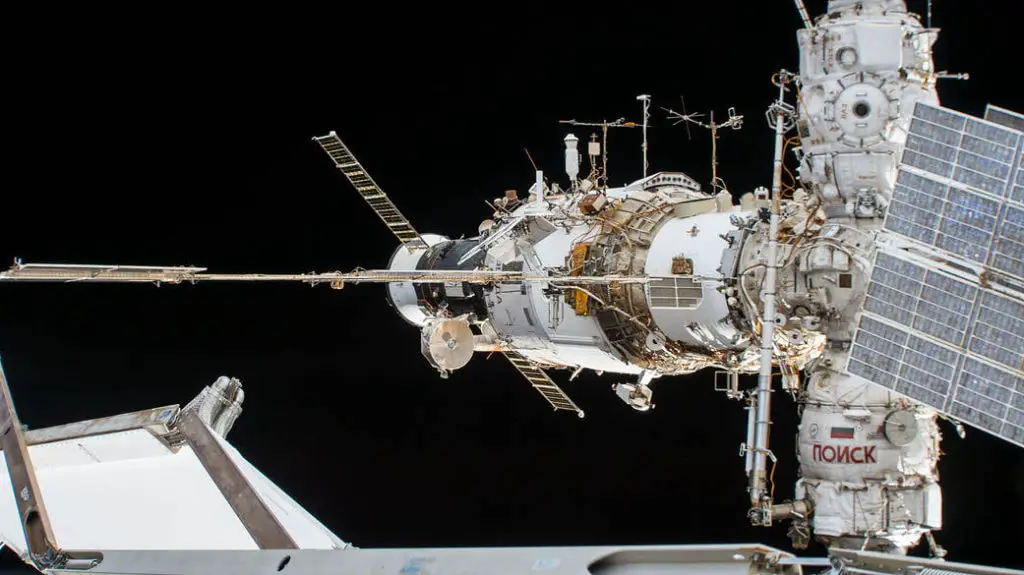
The MRM2 is a Russian Research Module that provides capabilities almost identical to that of the Pirs Docking Compartment.
- exit for extravehicular activity (EVA)
- servicing/refurbishing of the Russian Orlan spacesuits
Poisk (Explore) provides a port for docking the Soyuz Rocket and Progress logistics vehicles at its Zenith docking system. And additionally:
- power supply outlets and data transmission interfaces for five external workstations (1 active and 4 passive)
- accommodates science payloads for observation of the upper hemisphere and for exposure
- three temporary internal workstations near the module’s side windows
- observe a local horizon plane
- accommodate payloads equipped with vacuum interfaces
Permanent Multipurpose Module
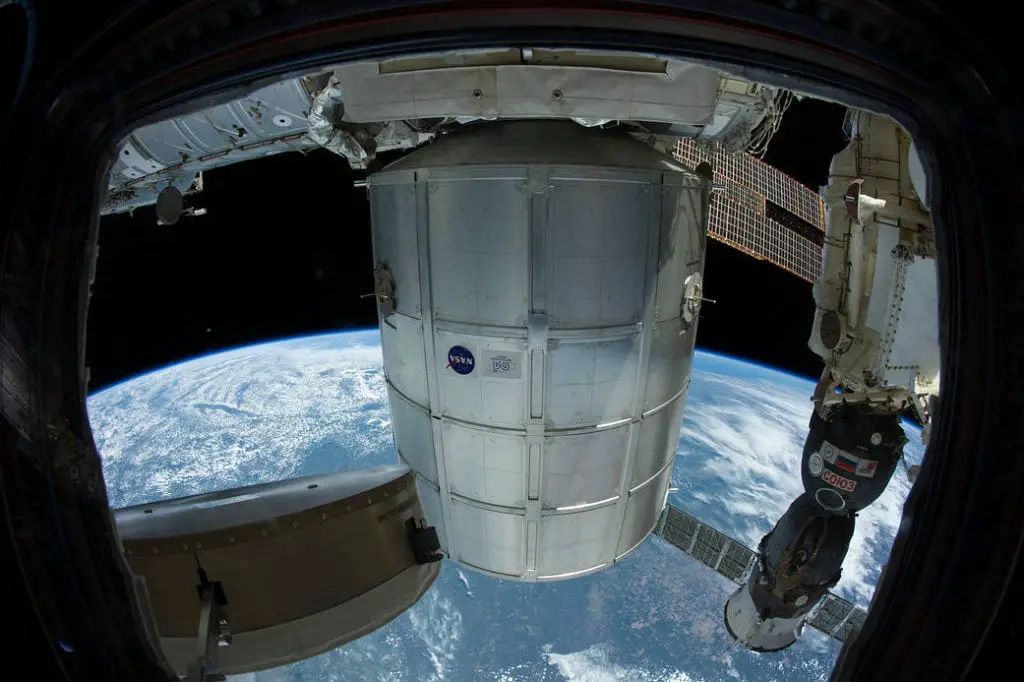
The Italian-built Permanent Multipurpose Module (PMM) is a large, reusable pressurized element derived from the Leonardo Multipurpose Logistics Module (MPLM).
As its name suggests, the PMM plays multiple roles, including:
- ferrying cargo back and forth to the station
- 2472 additional cubic feet of pressurized volume for storage and scientific use
- hold up to 16 racks of equipment, experiments, and supplies
- end-cone located at its aft with additional storage space for cargo bags and other items
Alpha Magnetic Spectrometer-2 (AMS-2)
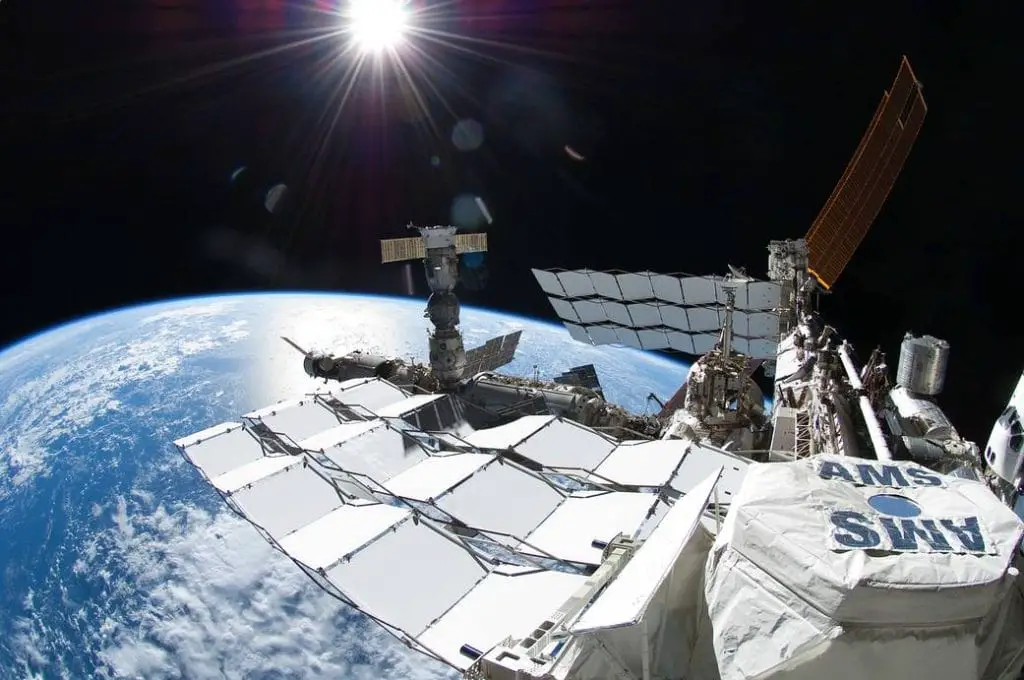
The AMS-02 experiment is a state-of-the-art particle physics detector that is constructed, tested, and operated by an international team composed of 56 institutes from 16 countries and organized under United States Department of Energy (DOE) sponsorship.
This spectrometer has accomplished much, including the collection and analysis of billions of cosmic ray events. Researchers have identified 9 million of these particles as electrons and their antimatter, the positron. This data proves critical to solving the origin of cosmic rays and antimatter, which helps humanity gain a deeper understanding of the universe.
Bigelow Expandable Activity Module (BEAM)
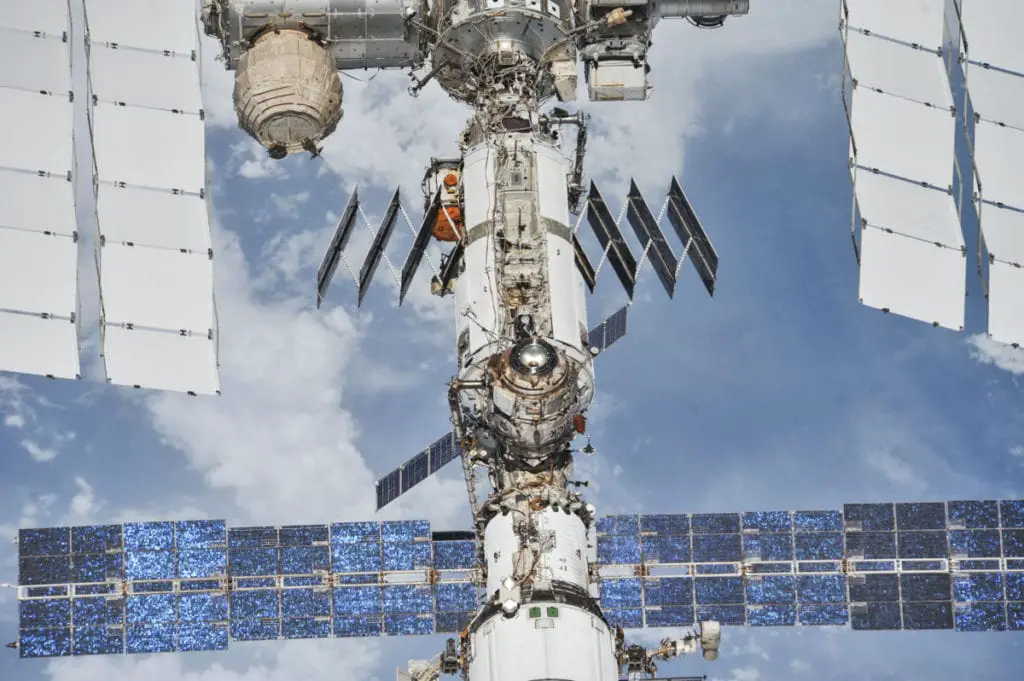
Image by NASA
BEAM is an experimental program that aims to test and validate expandable habitat technology.
This inflatable structure’s success will greatly decrease the amount of transport volume for future missions, as these “expandable” require minimum payload volume on a rocket.
The ability for this habitat to be expanded in space after deployment will be able to provide a comfortable area for astronauts to live and work, while providing varying degrees of protection from solar and cosmic radiation, space debris, atomic oxygen, UV radiation and other elements of the space environment.
Currently, the hatch to the BEAM remains closed. It will only open three to four times a year for a crew member to collect sensor data, perform microbial surface sampling, conduct periodic change-out of the radiation area monitors, and inspect the module’s general condition.
NanoRacks Bishop Airlock
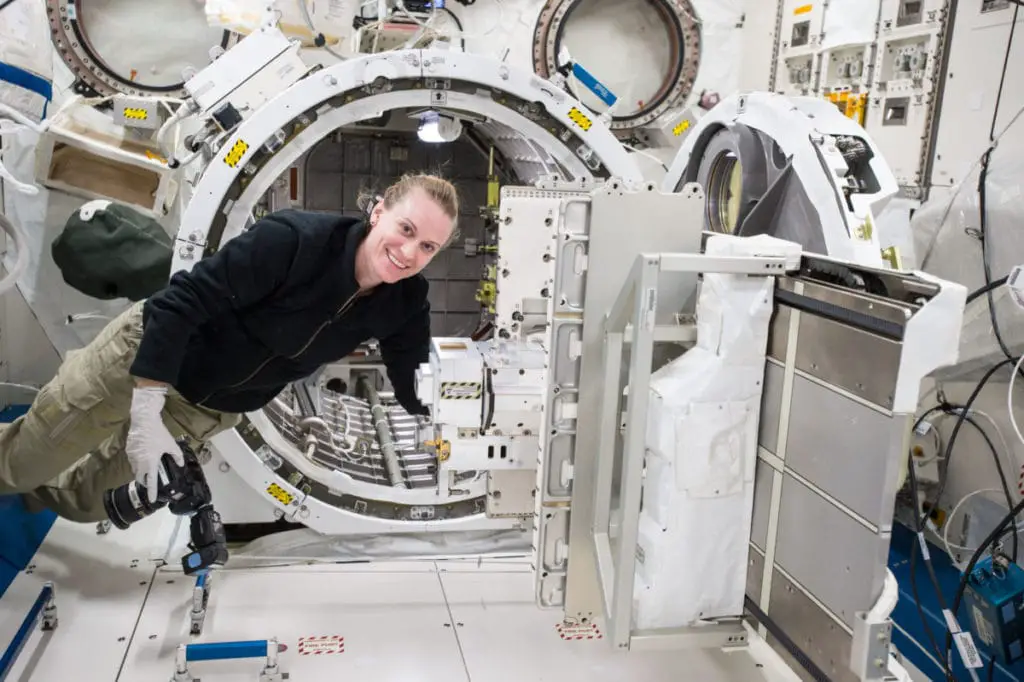
Image by NASA
The NanoRacks Bishop Airlock aims to serve as another door to space capable of moving larger payloads inside and outside the station. Bishop currently has five times the capacity of the Japanese Experiment Module Airlock (JEMAL), which before Bishop was the only operational airlock capable of transferring payloads in and out the station.
This capacity increases the amount of research done in low-Earth orbit and improves the efficiency of deploying new small satellites and CubeSats from the space station.
References
- NASA. (2015). Reference Guide to the International Space Station. https://www.nasa.gov/sites/default/files/atoms/files/np-2015-05-022-jsc-iss-guide-2015-update-111015-508c.pdf

